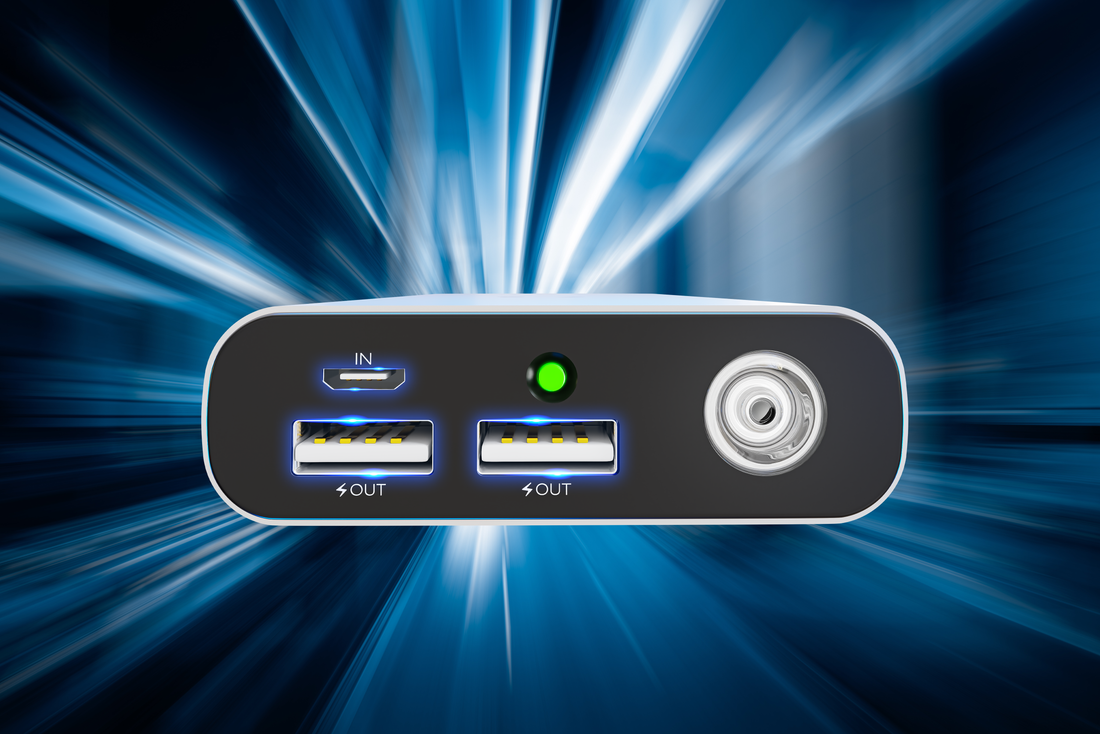Table of Contents
Table of Contents
- Introduction
- What is a Power Bank?
- Benefits of Having a Power Bank
- Convenience and Portability
- Extended Battery Life
- Compatibility with Different Devices
- How a Power Bank Works
- Battery Capacity
- Input and Output Ports
- Charging Time
- Factors to Consider When Purchasing a Power Bank
- Capacity
- Charging Speed
- Portability
- Safety Features
- Conclusion
- FAQs
What is a Power Bank?
A power bank is a portable charger that can store electrical energy in its internal battery and later use it to recharge electronic devices such as smartphones, tablets, and laptops. It has become an essential accessory for many people who rely on their devices throughout the day.
Benefits of Having a Power Bank
Convenience and Portability
One of the most significant benefits of having a power bank is its convenience and portability. You can carry it with you wherever you go, whether it's to the office, on a business trip, or a vacation. Power banks come in various sizes and designs, from small and compact to larger and heavier ones with higher battery capacity.Extended Battery Life
A power bank can extend the battery life of your devices significantly. It is particularly useful when you are traveling, attending a conference or an event, or in situations where you cannot access a power outlet. A power bank can provide several charges for your device, depending on its battery capacity.Compatibility with Different Devices
Power banks are compatible with various electronic devices, including smartphones, tablets, cameras, and laptops. You can use them to charge any device that has a USB port, making them a versatile accessory to have.How a Power Bank Works
Battery Capacity
The battery capacity of a power bank determines how much energy it can store and how many charges it can provide for your device. It is usually measured in milliampere-hours (mAh), and the higher the number, the more capacity the power bank has.Input and Output Ports
A power bank has input and output ports that allow it to charge and discharge energy. The input port is used to recharge the power bank's battery, while the output port is used to charge your device. It is essential to check the output voltage and amperage of the power bank to ensure that it is compatible with your device.Charging Time
The charging time of a power bank depends on its battery capacity and the charging speed. Most power banks take several hours to charge fully, and some may take longer. It is advisable to choose a power bank with a high charging speed if you need to charge your device quickly.
If you want to know more on how powerbanks work you can read our comprehensive guide to mobile charging.
Factors to Consider When Purchasing a Power Bank
Capacity
The capacity of a power bank is one of the essential factors to consider when purchasing one. It should have enough battery capacity to provide multiple charges for your device. A higher capacity power bank may be bulkier and heavier, but it will provide more charges.Charging Speed
The charging speed of a power bank is another critical factor to consider. A higher charging speed means that your device will charge faster. However, it is essential to check if the charging speed is compatible with your device and ensure that it does not cause any damage to it.Portability
Portability is another factor to consider when purchasing a power bank. If you plan to carry it with you everywhere you go, it should be lightweight and easy to fit in your bag or pocket. A smaller and compact power bank may have a lower battery capacity, but it will be more convenient to carry.Safety Features
It is essential to ensure that the power bank you purchase has safety features to prevent overcharging, overheating, and short-circuiting. These features will protect both your device and the power bank from damage.
Conclusion
A power bank can save your day and provide a convenient solution to your battery problems. It is a versatile accessory that can extend the battery life of your devices significantly. When purchasing a power bank, consider its capacity, charging speed, portability, and safety features.
FAQs
- How long does it take to charge a power bank?
- Can I charge multiple devices simultaneously with a power bank?
- Is it safe to use a power bank to charge my device?
- How long will a fully charged power bank last?
- Can I take a power bank on an airplane?

